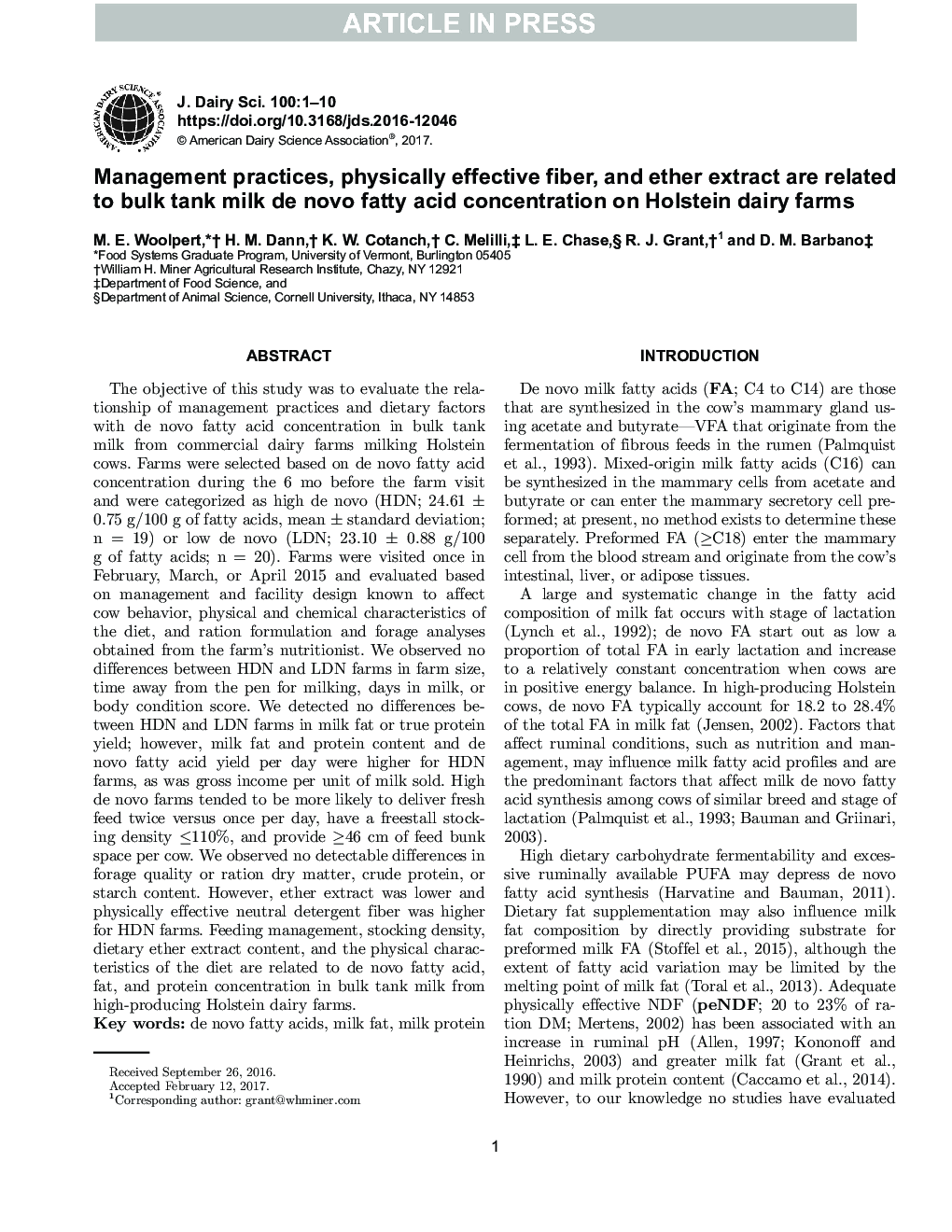| Article ID | Journal | Published Year | Pages | File Type |
|---|---|---|---|---|
| 5542298 | Journal of Dairy Science | 2017 | 10 Pages |
Abstract
The objective of this study was to evaluate the relationship of management practices and dietary factors with de novo fatty acid concentration in bulk tank milk from commercial dairy farms milking Holstein cows. Farms were selected based on de novo fatty acid concentration during the 6 mo before the farm visit and were categorized as high de novo (HDN; 24.61 ± 0.75 g/100 g of fatty acids, mean ± standard deviation; n = 19) or low de novo (LDN; 23.10 ± 0.88 g/100 g of fatty acids; n = 20). Farms were visited once in February, March, or April 2015 and evaluated based on management and facility design known to affect cow behavior, physical and chemical characteristics of the diet, and ration formulation and forage analyses obtained from the farm's nutritionist. We observed no differences between HDN and LDN farms in farm size, time away from the pen for milking, days in milk, or body condition score. We detected no differences between HDN and LDN farms in milk fat or true protein yield; however, milk fat and protein content and de novo fatty acid yield per day were higher for HDN farms, as was gross income per unit of milk sold. High de novo farms tended to be more likely to deliver fresh feed twice versus once per day, have a freestall stocking density â¤110%, and provide â¥46 cm of feed bunk space per cow. We observed no detectable differences in forage quality or ration dry matter, crude protein, or starch content. However, ether extract was lower and physically effective neutral detergent fiber was higher for HDN farms. Feeding management, stocking density, dietary ether extract content, and the physical characteristics of the diet are related to de novo fatty acid, fat, and protein concentration in bulk tank milk from high-producing Holstein dairy farms.
Keywords
Related Topics
Life Sciences
Agricultural and Biological Sciences
Animal Science and Zoology
Authors
M.E. Woolpert, H.M. Dann, K.W. Cotanch, C. Melilli, L.E. Chase, R.J. Grant, D.M. Barbano,
